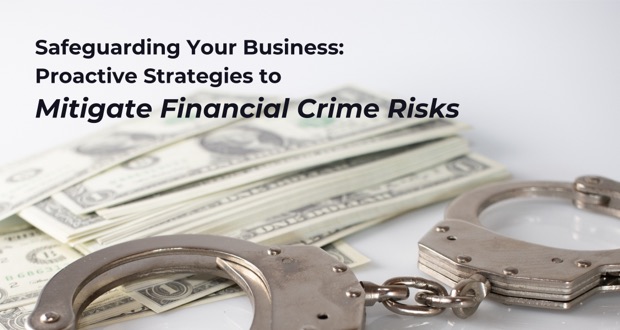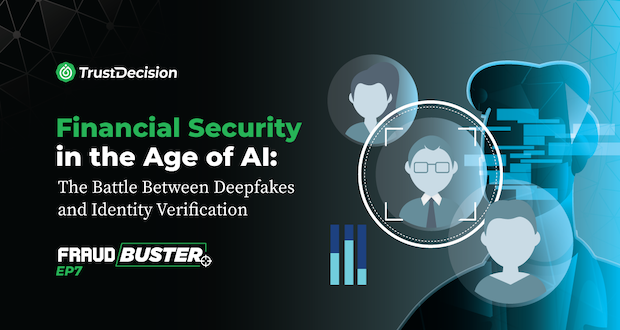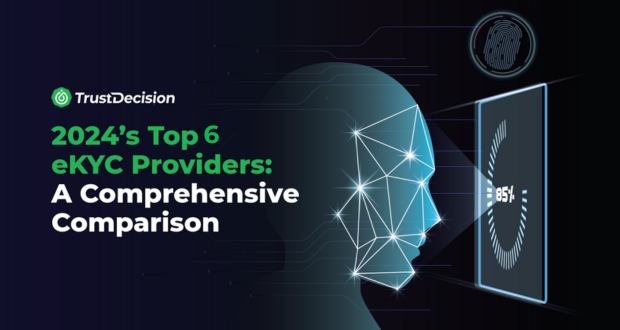The Importance of Proactive Risk Management
The importance of proactive risk management is significant in preserving the financial health of businesses. Businesses are obliged to safeguard their financial assets and ensure the integrity of financial transactions. Proactive risk management plays a crucial role in preventing potential losses that could be incurred due to fraud or other financial crimes. By identifying vulnerabilities early, organizations can take preventative measures to protect their bottom line and maintain their profitability.
Moreover, compliance and legal obligations are other critical facets of proactive risk management. Regulatory bodies place stringent requirements on all businesses to combat financial crime. It is imperative for businesses to comply with regulations such as anti-money laundering (AML) and Know Your Customer (KYC) norms. Proactive risk management is a tool that organizations can employ to ensure they adhere to these legal obligations. This not only helps in avoiding penalties and legal repercussions but also aids in maintaining business continuity.
Finally, proactive risk management is pivotal in maintaining stakeholder trust. Investors, customers, and partners expect businesses to operate ethically and transparently. Detecting and preventing financial crime are ways to demonstrate commitment to ethical practices. This enhances stakeholder trust, which is crucial for the overall success and growth of the organization. Hence, the importance of proactive risk management cannot be overstated.
Challenges in Detecting and Preventing Financial Crime
The challenges in detecting and preventing financial crime are many, and they are continually evolving. One of the main obstacles is the sophisticated techniques employed by financial criminals. These individuals or groups are remarkably adaptable, constantly modifying their methods to leverage technology and exploit vulnerabilities in organizations' systems. This poses a significant problem for traditional rule-based systems that struggle to keep pace with these evolving tactics.
Additionally, organizations face a data overload, receiving an overwhelming number of alerts related to potential financial crimes. As these alerts pile up, distinguishing genuine threats from false positives becomes a substantial challenge. This difficulty can lead to wasted resources on false leads and potentially overlooked actual threats.
Lastly, the global nature of financial crime adds another layer of complexity to detection and prevention efforts. Financial criminals do not confine their operations to one region; they operate across borders, complicating detection efforts and necessitating international collaboration. Proactive risk management, therefore, requires a global perspective and robust cooperation among various entities.
In summary, the challenges in detecting and preventing financial crime are multifaceted and complex. Counteracting these challenges necessitates sophisticated, data-centric solutions and international collaboration.
Understanding Financial Crime Examples
Defining Financial Crime
To understand the potential risks, it's important to define what constitutes financial crime. Broadly speaking, financial crime includes corporate crime, economic crime, and white-collar crime.
Corporate crime refers to illegal activities committed either by a corporation (i.e., a business entity) or by individuals acting on behalf of a corporation. For instance, the Enron scandal in the early 2000s, where high-ranking executives were involved in an accounting fraud scheme, is a notable example of financial crime on a corporate scale.
Next comes economic crime—a term that covers various illegal activities in which the goal is economic gain. Examples include money laundering, tax evasion, bribery, corruption, and embezzlement. The infamous case of Bernie Madoff's Ponzi scheme serves as a prime example of an economic crime where unsuspecting investors were deceived into a fraudulent investment operation.
White-collar crime is usually committed by individuals in the business world who engage in deceptive, fraudulent, or corrupt practices for personal or business gain. Examples include insider trading, embezzlement, and tax evasion. One of the most notorious white-collar criminals is Jordan Belfort, whose fraudulent stock manipulation schemes led to massive losses for investors and were later depicted in the film "The Wolf of Wall Street."
Money fraud crimes can also be categorized under financial crimes, where criminals deceive their victims into willingly giving up their money or assets. An example here includes Ponzi schemes, where new investors' funds are used to pay previous investors, creating the illusion of legitimate business profits.
Impact on Businesses
The impact of financial crime on businesses is profound. It not only results in significant financial loss but also damages a company's reputation and integrity. It can also have severe legal ramifications, including regulatory fines and potential criminal prosecution.
Therefore, modern businesses need to adopt proactive and comprehensive strategies to effectively mitigate financial crime risks. This includes robust internal controls, regular compliance reviews, ongoing employee training, and investing in advanced technologies capable of predicting and identifying potential financial crime activities.
By understanding the various financial crime examples and the risks they pose, businesses can be better prepared to prevent these threats, safeguarding their assets, reputation, and future growth.
The Limitations of Reactive Approaches
Traditional Rules-Based AML Framework
- Rules-Based Approach:
- Historically, Anti-Money Laundering (AML) efforts relied on predefined rules to detect suspicious transactions.
- These rules flagged transactions based on specific criteria (e.g., large cash deposits, frequent international transfers).
- Challenges:
- Rigidity: Rules are static and may not adapt quickly to emerging threats or changing criminal tactics.
- False Positives: High false positive rates lead to inefficient investigations, wasting resources.
Insufficiency in Today’s Landscape
- Sophisticated Criminals:
- Financial criminals now employ advanced techniques, such as layering funds across multiple accounts or using cryptocurrencies.
- Reactive rules struggle to keep up with these evolving tactics.
- Data Overload:
- Financial institutions receive an overwhelming number of alerts.
- Investigating each alert exhaustively is impractical, leading to missed high-risk activities.
- High-Risk Blind Spots:
- Reactive systems often focus on known patterns, missing novel or subtle anomalies.
- Criminals exploit these blind spots to evade detection.
Addressing the Overload of Alerts
- Risk-Based Approach:
- Proactive risk management shifts from rules-based to risk-based.
- Prioritize alerts based on risk severity and context.
- Machine Learning and AI:
- Adaptive algorithms learn from historical data and identify patterns.
- They reduce false positives and enhance detection accuracy.
- Behavioral Analytics:
- Monitor customer behavior over time.
- Detect deviations from normal patterns, signaling potential risks.
Proactive Strategies for Mitigating Financial Crime Risks
In the face of increasing financial crime risks, businesses must shift their approach from ticking compliance boxes to adopting a more proactive, risk-based, intelligence-led approach. This involves moving beyond merely complying with regulatory requirements and focusing on identifying, understanding and managing potential risks before they materialize.
Businesses should start by identifying risk categories that warrant deeper investigation. These could vary depending on the industry and the specific business but could include unusually large transactions, transactions with entities in high-risk countries, or rapid, unexplained growth in customer accounts. Once these risk categories are identified, clear investigation protocols should be established. This includes clear guidelines on how to escalate identified risks and the steps to take when a potential financial crime is detected.
Collaboration, too, plays a crucial role in mitigating financial crimes. Businesses should actively seek to engage in public-private partnerships, sharing information and insights with law enforcement, regulators, and other businesses. These collaborations can create a united front against financial criminals, making it harder for them to exploit individual weaknesses and blind spots.
Moreover, leveraging big data analytics and artificial intelligence (AI) can provide businesses with a powerful tool for early detection. Through machine learning algorithms, AI can analyze vast amounts of data at high speed, identifying suspicious patterns and trends that humans might miss. This technology can "learn" over time, improving the accuracy of its predictions and reducing the number of false alarms.
For instance, global banks such as HSBC and Standard Chartered have been actively using AI to combat money laundering and other financial crimes. These banks use machine learning to create risk scores for their customers based on their behavior. If a customer's activity deviates too far from their normal pattern, the system flags it for further investigation – a proactive approach that significantly increases the chances of detecting criminal activity at an early stage.
Ultimately, mitigating the risks of financial crime entails implementing a strategic approach centered around risk identification, effective investigation protocols, collaboration, and the effective use of technology. One such proactive strategy to consider incorporates the principle of Know Your Customer (KYC). KYC is an effective tool in the battle against financial crime, as it allows businesses to verify the identity of their clients and assess potential risks of illegal intentions for the business relationship. By adopting such strategies, businesses can safeguard their assets, protect their reputation, and contribute to the broader fight against financial crime.
KYC++: Strengthen Your Digital Onboarding Process
In the current digital landscape where financial crimes are ramping up, a robust identity verification solution is no longer a luxury but a necessity. This is where TrustDecision’s KYC++ comes to the fore. An integrated identity verification suite, KYC++ combines document verification, biometric authentication, and device checks, providing a comprehensive solution to the challenges posed by digital identity verification.
Key Features:
- Device Fingerprint Technology:
- TrustDecision maintains a global database of accumulated devices.
- Analyzes device fingerprints to detect risks associated with specific devices.
- Identifies patterns related to malicious software or suspicious behavior.
- Daily Active User Processing:
- Regularly updates device information for accurate risk assessment.
- Detection of Malicious Software:
- Flags devices associated with malware or fraudulent activities.
- High Data Accuracy and Fast Results:
- TrustDecision’s KYC++ ensures precise verification results.
- Robust anti-spoofing measures detect altered images and manipulated documents.
- Verification processes are swift, minimizing user friction.
- Global Coverage:
- Access to over 13,000 document types from 270 countries.
- Supports 138 languages for seamless global verification.
- Enables businesses to verify identities across diverse regions.
Conclusion
In the ever-evolving landscape of financial crime, proactive strategies are paramount for safeguarding businesses. By staying ahead of threats, organizations can protect their assets, maintain stakeholder trust, and ensure compliance.
TrustDecision’s KYC++ solution offers a comprehensive approach to identity verification, combining document checks, biometrics, and device fingerprinting. It empowers businesses to:
- Detect Risks Early: By analyzing global device fingerprints, TrustDecision identifies potential threats.
- Ensure Accuracy: Robust anti-spoofing measures enhance data accuracy.
- Global Coverage: Access to diverse document types and languages for seamless verification.
Embrace innovation and prioritize risk management. Explore TrustDecision’s KYC++ solution to fortify your defenses against financial crime.









.jpeg)




